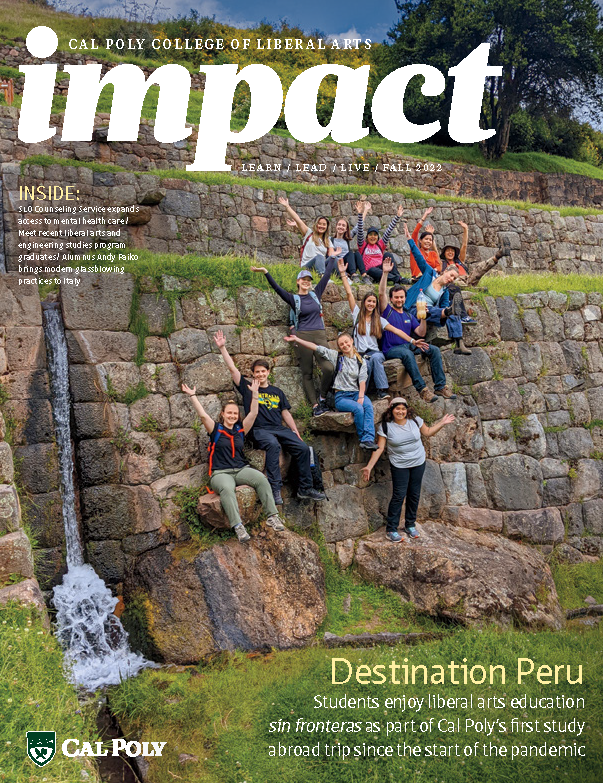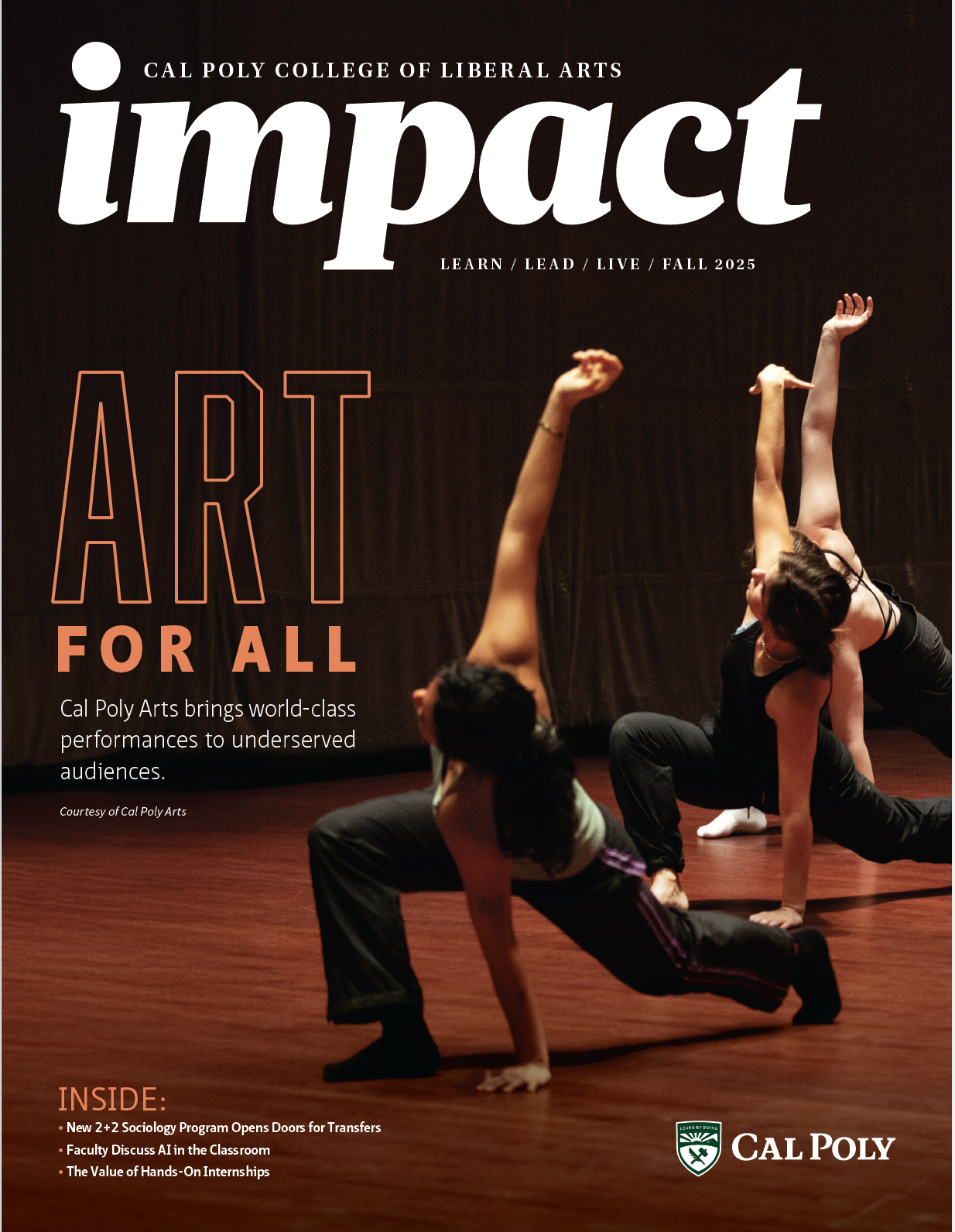Liberal Arts Sin Fronteras in Peru
A group of 15 students traveled to Peru for Cal Poly’s first study abroad trip in more than two years.

In March 2022, roughly two years after the COVID-19 pandemic shut down international travel, Social Sciences Department Chair Benjamin F. Timms and 15 student travelers boarded a plane headed for Cuzco, Peru. The Cal Poly in Peru program — one of few global spring quarter trips offered by the university’s International Center — was the first Cal Poly study abroad program to resume travel.
“Leaving was really nerve-wracking because we didn’t know how things were going to go,” Timms said. “Peru was just opening up, so we were among the first groups going there, and they were really happy to have us since tourism is a major factor for their economy.”
During the eight-week trip, students took Spanish classes offered by local professors from Centro Bartolome de las Casas in Cuzco, as well as two courses taught by Timms: ISLA 315: Critical Issues in Latin American Studies and WLC 310: Humanities in World Cultures. The student cohort represented four of Cal Poly’s six colleges with majors including anthropology and geography, kinesiology, computer engineering, and environmental management and protection.
In the spirit of Cal Poly’s mission to provide a liberal arts education sin fronteras — without borders, boundaries or barriers — Timms led the interdisciplinary group on several field excursion adventures around the country.
“One of the classes I taught was about the environment in the developing Americas, specifically in Peru, and we got to go down the Amazon Basin and do all kinds of tours, forest hikes and learn about their ecotourism,” Timms said. “We also went to Lake Titicaca on the border of Bolivia and stayed on an island, so we got to experience the kind of community-based tourism there. And at the end, of course, we went to Machu Picchu as a program grand finale, if you will. We hiked in and spent three days at Machu Picchu learning about archaeology.”
While memorable trips are often a key factor for students choosing to study abroad, anthropology and geography student Amanda Arendt said that, for her, the most underrated part of the trip was the camaraderie between the 15 students.
“There are all these big things we did that are obviously standout memories. But I do think that some of my favorite parts were the small things like gather- ing at our office as a group or for our movie night together,” Arendt said. “You’re going through two months with 15 people that are not from your peer group and you are kind of forced to be friends. I think that honestly is the part that I really loved because I never would have met these people otherwise.”
Alongside the extracurricular activities, Timms led the group on two two-day volunteer trips to a remote village about an hour outside of Cuzco, organized by the nonprofit Pro Peru. Together, the group built more than 40 clean-burning stoves with chimneys for local community members. The students used ceramic tiles and adobe to construct the stoves, replacing the traditional wood-burning stoves with no ventilation that were the cause of several health problems for the community.

Anthropology and geography student John Vilarino said he enjoyed meeting members of the Indigenous community and learning more about their culture.
“When we first got there, [the community] had laid out this beautiful mural of flower petals that said, ‘Welcome Cal Poly,’ and they had flower crowns for us,” Vilarino said. “Every single member of the community introduced themselves and told us a little bit about themselves.”
When the students weren’t exploring the Amazon, visiting historical sites or volunteering with the local community, Arendt said they used their free weekends
for sightseeing, ATV riding, horseback riding, ziplining and even jungle treks. Vilarino also called the free weekends one of his favorite parts of the trip.
“I feel like I learned the most during those experiences because it’s very unstructured,” Vilarino said. “We got to talk to local people who were tour guides, and they shared with us their unique perspectives, cultural traditions and stories.”
Throughout the trip, the group followed all Peruvian COVID-19 restrictions, which included wearing masks and using hand sanitizer. Timms noted that no one in their study abroad cohort tested positive for COVID-19.
The trip provided students with a well-rounded international experience, one that many agree was once in a lifetime.
“Studying abroad was one of the best things that I’ve ever done, and I feel like I’ve changed so much because of it,” Vilarino said. “I’m a better student because of it, a more well-rounded person and I’m more culturally conscious.”
In the end, Timms says the trip was a success and encourages students to apply to study abroad programs to enhance both their educational and personal growth.
“Studying abroad is a life-changing event,” Timms said. “It opens your eyes to other parts of the world and other cultures and peoples, which is valuable as a life experi- ence but also in terms of employment. This is Learn by Doing in action. I’m a geography professor, so though we talk about other parts of the world, actually going there is a much different and better experience.”
Learn more about the upcoming spring 2023 program at abroad.calpoly.edu and see a student-created video montage recapping the 2022 program at youtu.be/LUc4B7mlYQE.




 Download a pdf of this article or a pdf of the full IMPACT magazine.
Download a pdf of this article or a pdf of the full IMPACT magazine.

